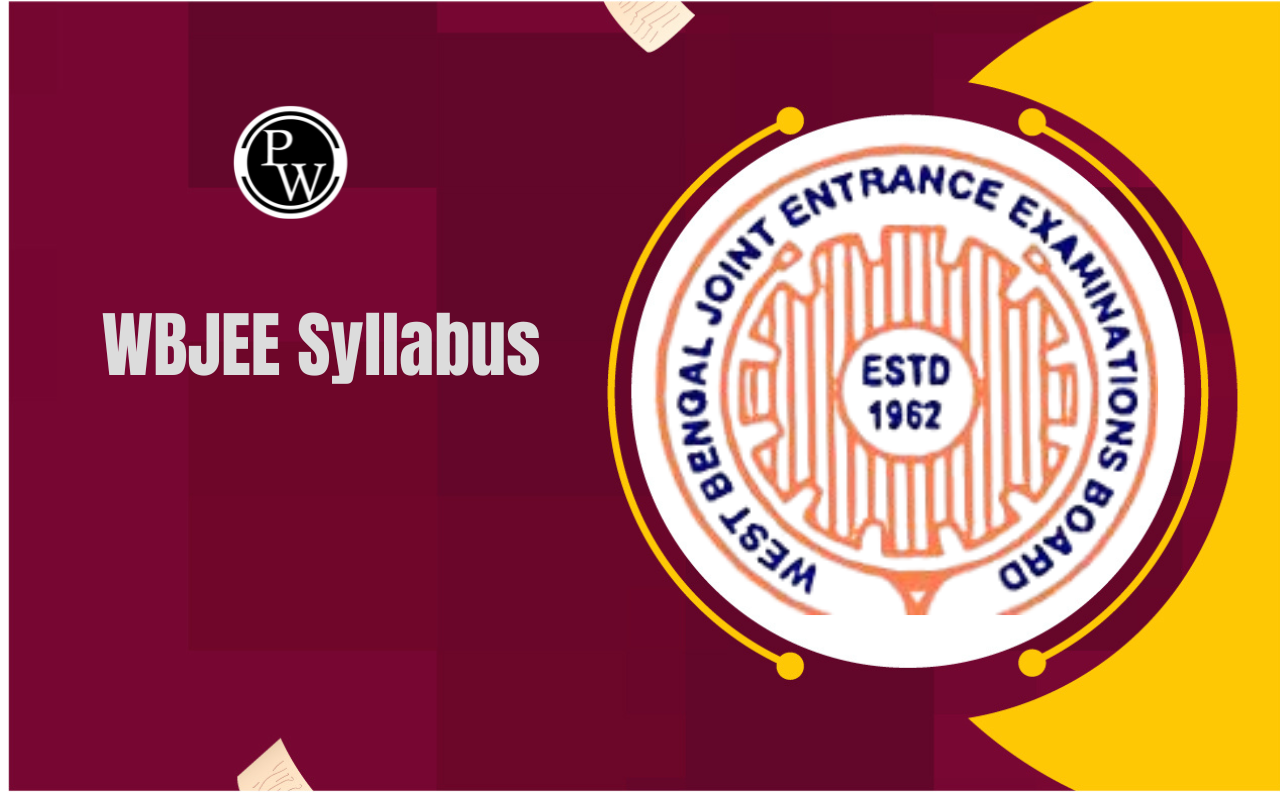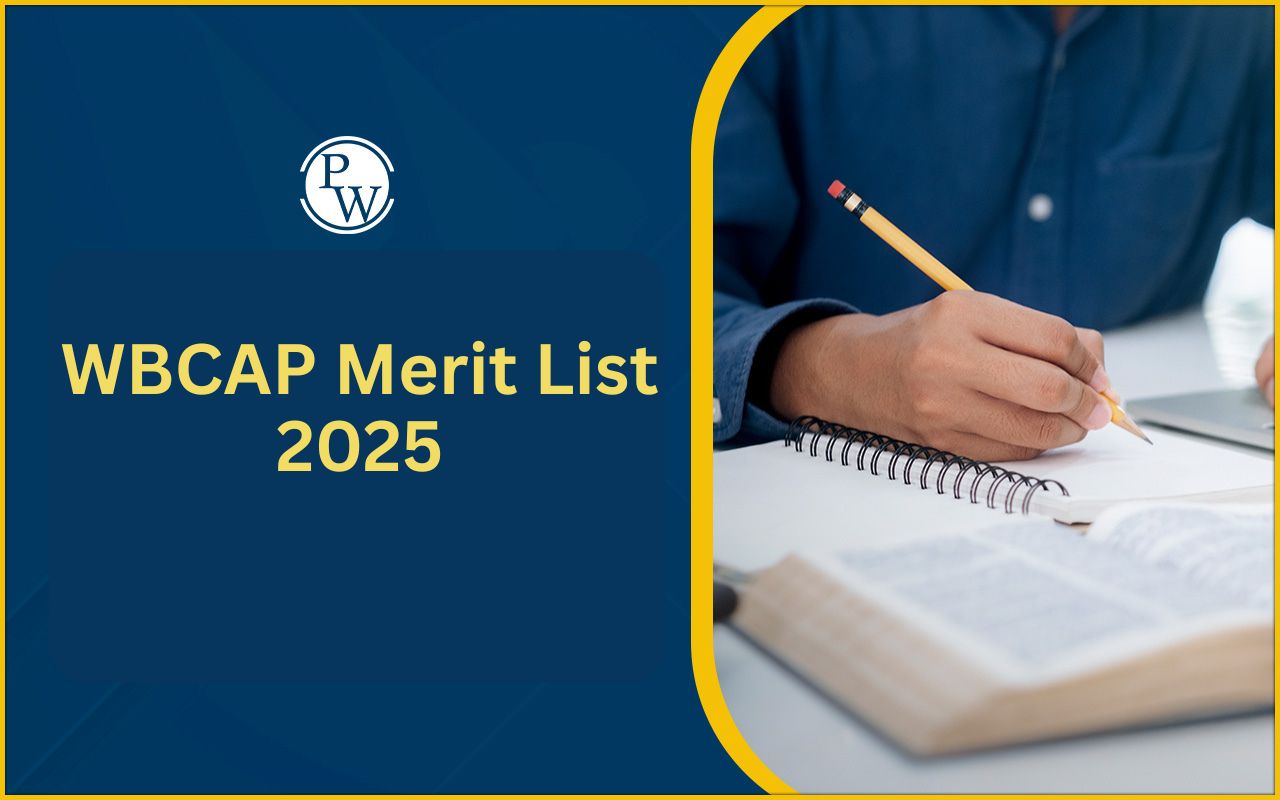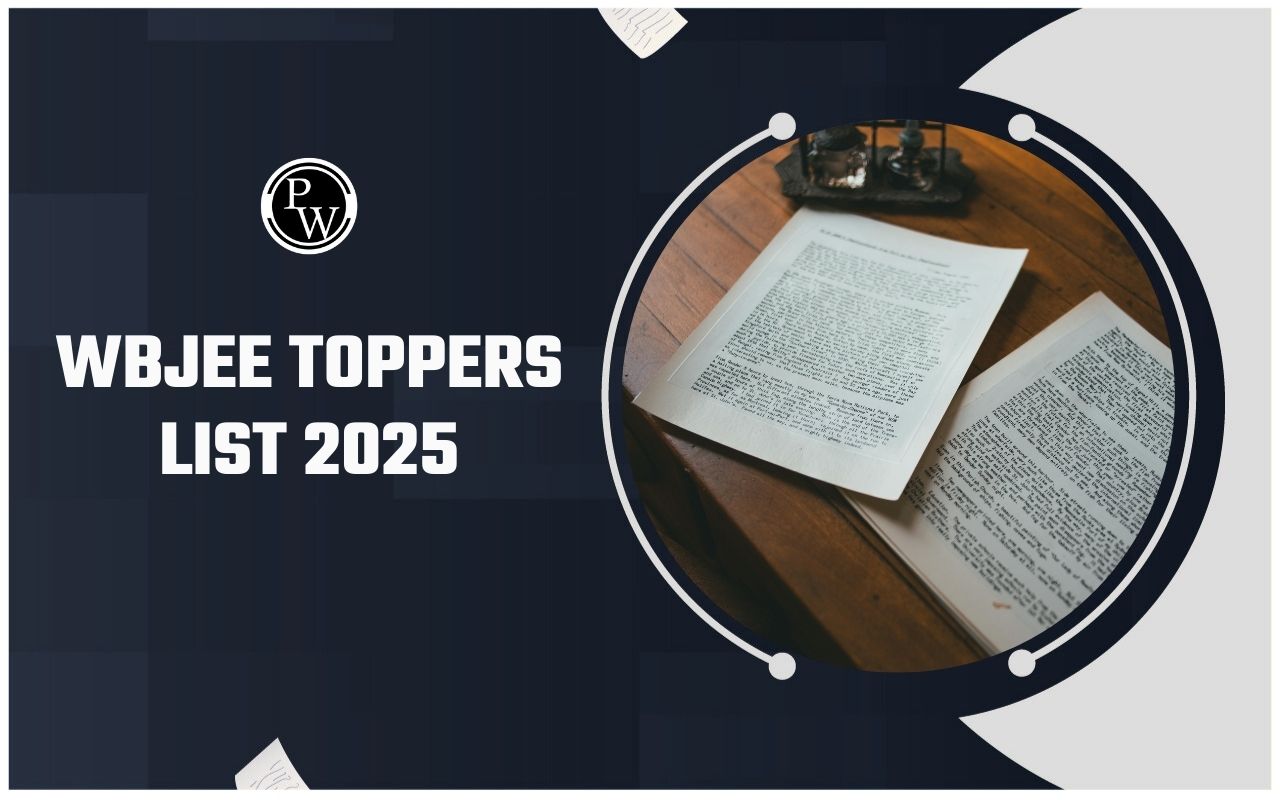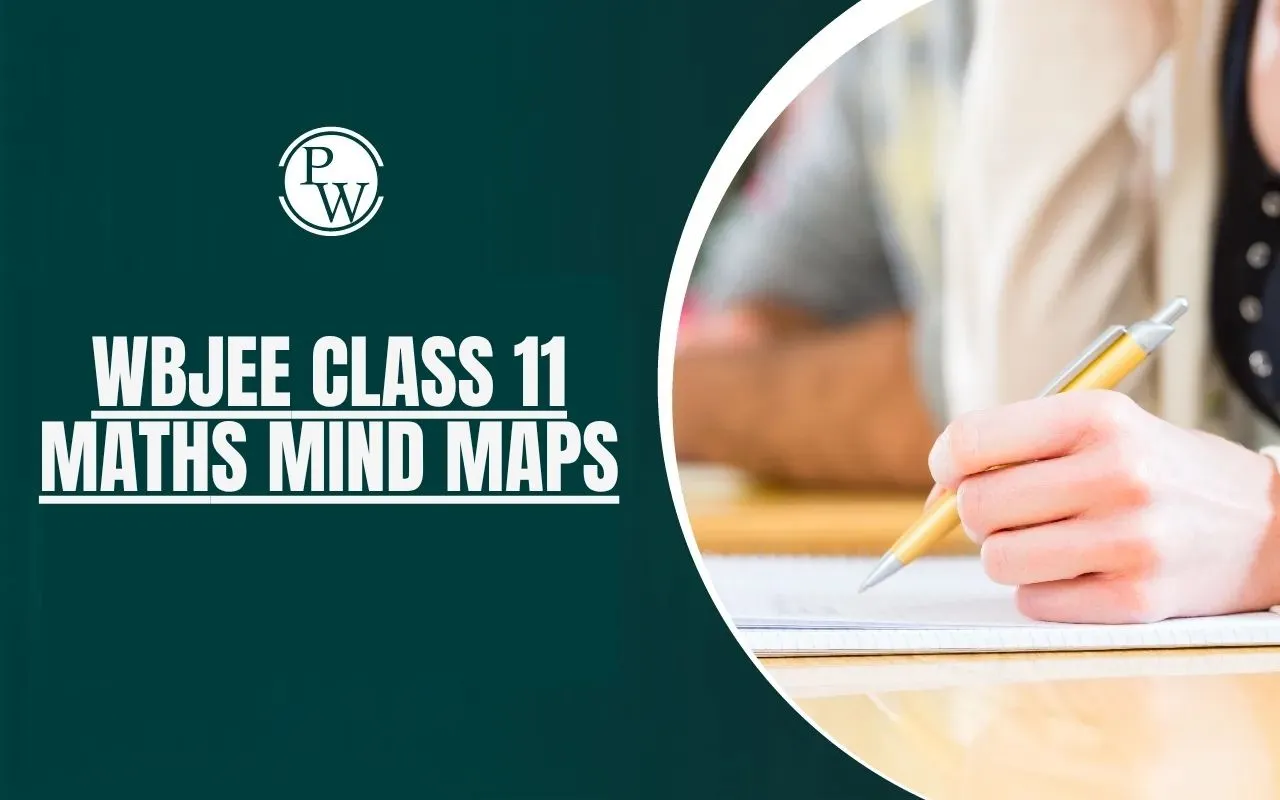
WBCHSE Class 11 Biological Science Syllabus 2024-25: The WBCHSE Class 11 Biological Science Syllabus 2024-25 has been released by the West Bengal Council of Higher Secondary Education (WBCHSE).
The syllabus is structured semester-wise for Class 11, allowing students to focus on specific topics each semester. This semester-based approach ensures a more organized learning path and efficient exam preparation. Students preparing for their exams can download the WBCHSE Class 11 Biological Science syllabus from the link given below. The syllabus PDF includes detailed information on the chapters, evaluation schemes, and exam patterns for the academic year 2024-25.Also Read: WBCHSE Class 11 Maths Syllabus 2024-25
WBCHSE Class 11 Biological Science Syllabus 2024-25 Overview
The WBCHSE Class 11 Biological Science Syllabus 2024-25 provides a well-structured learning plan for students, focusing on key biological concepts, including human and plant physiology. The detailed semester-wise syllabus is provided below.| WBCHSE Class 11 Biological Science Syllabus 2024-25 Overview | |
|---|---|
| Exam Name | WBCHSE Class 11 Examinations 2024-25 |
| Conducting Body | West Bengal Council of Higher Secondary Education (WBCHSE) |
| Total Chapters in Semester 1 | 10 Chapters |
| Total Chapters in Semester 2 | 10 Chapters |
| Expected Exam Date (Semester 1) | 14th March 2025 - 27th March 2025 |
| Expected Exam Date (Semester 2) | To be announced |
| Official Website for Syllabus PDF | wbchse.nic.in |
WBCHSE Class 11 Biological Science Syllabus 2024-25 Semester Wise
The WBCHSE Class 11 Biological Science Syllabus 2024-25 is divided into two semesters. Each semester covers essential biology topics, offering a balanced approach to both theory and practicals. Full topic details are given below.WBCHSE Class 11 Biological Science Syllabus 2024-25 For Semester 1
WBCHSE Class 11 Biological Science Syllabus 2024-25 For Semester 1 includes foundational topics such as diversity of life, classification of organisms, and basic cell structure. The detailed breakdown of topics covered in Semester 1 is provided below for effective preparation.| WBCHSE Class 11 Biological Science Syllabus 2024-25 For Semester 1 | |||
|---|---|---|---|
| UNIT No. | TOPICS | CONTACT HOURS | MARKS |
| UNIT I (DIVERSITY OF LIVING ORGANISMS) | |||
| Chapter-1: The Living World | Biodiversity; need for classification; three domains of life; taxonomy and systematics; concept of species; binomial nomenclature; tools for study of biodiversity | 2 | 19 |
| Chapter-2: Biological Classification | Five Kingdoms of Classification; salient features and classification of Monera, Protista, and Fungi; classification of Lichens, Viruses, Viroids, and Prions. | 5 | |
| Chapter-3: Plant Kingdom | Classification of Plants into major groups; Salient and distinguishing features; Algae, Bryophyta, Pteridophyta, Gymnosperms | 5 | |
| Chapter-4: Animal Kingdom | Salient features and classification of animals, non-chordates up to phyla level, and chordates up to class level. | 7 | |
| UNIT II (STRUCTURAL ORGANIZATIONS IN PLANTS AND ANIMALS) | 16 | ||
| Chapter-5: Morphology of Flowering Plants | Morphology of different parts of flowering plants: root, stem, leaf, inflorescence, flower, fruit, seed; description of families | 8 | |
| Chapter-6: Anatomy of Flowering Plants | Plant tissue systems including mechanical tissue systems; anatomy of monocots and dicots. | 4 | |
| Chapter-7: Structural Organization in Animals | Animal tissue systems: epithelial, connective, muscular, and nervous systems; structure, organization, and function. | 4 | |
| UNIT III (CELL STRUCTURE AND FUNCTIONS) | 20 | ||
| Chapter-8: Cell - The Unit of Life | Cell theory; structure of prokaryotic and eukaryotic cells; organelles – structure and function (including mitochondria, ribosomes, etc.) | 7 | |
| Chapter-9: Biomolecules | Chemical constituents of living cells: biomolecules; structure and function of proteins, carbohydrates, lipids, nucleic acids; Enzyme types and properties | 9 | |
| Chapter-10: Cell Cycle and Cell Division | Cell cycle, mitosis, meiosis, and their significance. | 4 | |
WBCHSE Class 12 Chemistry Syllabus 2025
WBCHSE Class 11 Biological Science Syllabus 2024-25 For Semester 2
Semester 2 expands on advanced biological topics like human and plant physiology, cellular processes, and growth. The semester focuses on critical areas necessary for understanding complex biological functions. Full topic details are mentioned below.| WBCHSE Class 11 Biological Science Syllabus 2024-25 For Semester 2 | |||
|---|---|---|---|
| Chapter Name | Details | Contact Hours | Marks |
| Chapter-11: Photosynthesis in Higher Plants | Photosynthesis as a means of autotrophic nutrition; site of photosynthesis; pigments involved in photosynthesis; photochemical & biosynthetic phases of photosynthesis; cyclic and non-cyclic photophosphorylation; C3, C4 pathways, CAM cycle, etc. | 14 | |
| Chapter-12: Respiration in Plants | Exchange of gases; cellular respiration — glycolysis, fermentation (anaerobic), TCA cycle, electron transport system (aerobic); energy relations, respiratory quotient. | 14 | |
| Chapter-13: Plant Growth and Development | Seed germination; conditions of growth; differentiation, dedifferentiation, redifferentiation; plant growth regulators (auxin, gibberellin, cytokinin, ethylene, ABA); photoperiodism. | 6 | 34 |
| Chapter-14: Digestion and Absorption | Human alimentary canal; digestive enzymes; digestion, absorption of carbohydrates, proteins, fats; disorders related to digestion (PEM, indigestion, vomiting, jaundice, etc.). | 9 | |
| Chapter-15: Breathing and Exchange of Gases | Respiratory system in humans; exchange of gases; regulation of respiration; respiratory volume; disorders related to breathing — asthma, emphysema. | 9 | |
| Chapter-16: Body Fluids and Circulation | Composition of blood; human circulatory system; cardiac cycle, ECG; lymph; disorders — hypertension, coronary artery disease, angina pectoris, heart failure. | 9 | |
| Chapter-17: Excretory Products and their Elimination | Human excretory system; structure and function; urine formation; osmoregulation; disorders — uremia, kidney failure, dialysis. | 9 | |
| Chapter-18: Locomotion and Movement | Types of movement — ciliary, flagellar, muscular; human skeletal system; disorders — arthritis, osteoporosis. | 8 | |
| Chapter-19: Neural Control and Coordination | Human nervous system; brain and spinal cord, PNS, reflex action; sense organs; disorders — Parkinson’s, Alzheimer’s. | 12 | |
| Chapter-20: Chemical Coordination and Integration | Endocrine glands and hormones; human endocrine system — hypothalamus, pituitary, thyroid, adrenal, pancreas, gonads; disorders — dwarfism, diabetes, goitre, etc. | 9 | |
WBCHSE Class 11 Biological Science Syllabus 2024-25 PDF Download
The WBCHSE Class 11 Biological Science Syllabus 2024-25 is now available for students to download in PDF format. This syllabus provides a comprehensive guide to the topics covered throughout the academic year. Students can download the PDF from the link given below to aid their exam preparation and stay up-to-date with the syllabus requirements.WBCHSE Class 11 Biological Science Syllabus 2024-25 PDF Download Link
WBCHSE Class 11 Biological Science Evaluation Scheme
The evaluation scheme for WBCHSE Class 11 includes theory and practical exams, ensuring students' understanding of concepts and application of practical skills. Details about marks distribution and evaluation criteria are provided below.| WBCHSE Class 11 Biological Science Evaluation Scheme | |
|---|---|
| Evaluation Scheme | Marks |
| One major experiment Part A (experiment no. 1, 3, 7) | 6 |
| One minor experiment Part A (experiment no. 6, 8, 9, 10, 11) | 5 |
| Slide preparation Part A (experiment no. 2, 4, 5) (anyone) | 3 |
| Spotting Part B (three experiments) | 6 (2x3) |
| Practical record + Viva voce | 5 (3+2) |
| Investigatory project + Viva voce | 5 (3+2) |
| Total | 30 |
| Practical Classes : SEM-I = 14, SEM-II = 22 (24 Hours Total) | |
Important Things about WBCHSE Class 11 Biological Science Syllabus
To excel in the WBCHSE Class 11 Exams, students should follow the given tips below:- Begin studying as soon as the syllabus is released. Start with understanding the concepts in-depth. Semester 1 exams are usually held in March, so it’s crucial to allocate time for each chapter. Use the allocated contact hours for each topic as a guide to understand how much time each chapter needs.
- The syllabus is divided into two semesters. Focus on Semester 1 topics initially, and once completed, transition to Semester 2. Make a schedule to complete the syllabus at least 2-3 months before the exam, giving enough time for revision.
- After completing each chapter, revise immediately and regularly. Plan to complete the first revision at least 1 month before the exams.
- The syllabus includes a significant portion of practical work and project assessments. Regularly practice experiments and ensure that your practical record is well-maintained. Practical exams carry marks, so understanding the application of theoretical concepts is crucial.
- Complex topics such as Photosynthesis, Respiration, and Neural Control may require additional help. Study groups can help you clarify doubts, and teachers can provide insights on important topics and practical aspects.
- Use previous years’ papers and mock tests to simulate the exam experience. This will help you understand the exam pattern and manage your time during the actual exam.
WBCHSE Class 11 Biological Science Syllabus 2024-25 FAQs
What is the structure of WBCHSE Class 11 Biological Science syllabus for 2024-25?
The syllabus is divided into two semesters, covering various aspects of biological science. Each semester includes both theory and practical components designed to test students' understanding comprehensively.
How should students prepare for the WBCHSE Class 11 Biology exam?
To excel, students should thoroughly review the syllabus, focus on important chapters, and practice regularly. Creating a study plan based on the syllabus division helps in systematic preparation.
When will the WBCHSE Class 11 Biology exams be conducted?
While exact dates may vary, the WBCHSE usually conducts exams at the end of each semester which is expected to be conducted in March 2025.
Where can students download the WBCHSE Class 11 Biological Science syllabus PDF?
Students can download the syllabus from the official WBCHSE website or through provided link in the article.
Talk to a counsellorHave doubts? Our support team will be happy to assist you!

Free Learning Resources
PW Books
Notes (Class 10-12)
PW Study Materials
Notes (Class 6-9)
Ncert Solutions
Govt Exams
Class 6th to 12th Online Courses
Govt Job Exams Courses
UPSC Coaching
Defence Exam Coaching
Gate Exam Coaching
Other Exams
Know about Physics Wallah
Physics Wallah is an Indian edtech platform that provides accessible & comprehensive learning experiences to students from Class 6th to postgraduate level. We also provide extensive NCERT solutions, sample paper, NEET, JEE Mains, BITSAT previous year papers & more such resources to students. Physics Wallah also caters to over 3.5 million registered students and over 78 lakh+ Youtube subscribers with 4.8 rating on its app.
We Stand Out because
We provide students with intensive courses with India’s qualified & experienced faculties & mentors. PW strives to make the learning experience comprehensive and accessible for students of all sections of society. We believe in empowering every single student who couldn't dream of a good career in engineering and medical field earlier.
Our Key Focus Areas
Physics Wallah's main focus is to make the learning experience as economical as possible for all students. With our affordable courses like Lakshya, Udaan and Arjuna and many others, we have been able to provide a platform for lakhs of aspirants. From providing Chemistry, Maths, Physics formula to giving e-books of eminent authors like RD Sharma, RS Aggarwal and Lakhmir Singh, PW focuses on every single student's need for preparation.
What Makes Us Different
Physics Wallah strives to develop a comprehensive pedagogical structure for students, where they get a state-of-the-art learning experience with study material and resources. Apart from catering students preparing for JEE Mains and NEET, PW also provides study material for each state board like Uttar Pradesh, Bihar, and others
Copyright © 2025 Physicswallah Limited All rights reserved.
Get App









